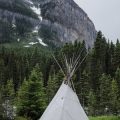1. What Is the UTM Grid System?
The Universal Transverse Mercator (UTM) grid system is a way of pinpointing exact locations on the Earths surface using a two-dimensional coordinate system. Instead of using latitude and longitude, which can be hard to read on a map, UTM breaks the world into a series of zones and gives each location a set of numbers that make it much easier to use—especially when youre out hiking, camping, or navigating with a USGS topographic map.
How the UTM System Works
The UTM system divides the Earth into 60 vertical zones, each 6 degrees of longitude wide. These zones are numbered from 1 to 60 starting at the International Date Line and moving eastward. In the U.S., most maps use zones 10 through 19. Each zone uses its own version of a flat map projection called the Transverse Mercator projection, which helps keep distances and angles accurate within that zone.
Basic Components of a UTM Coordinate
Each location in the UTM system is defined by two main numbers:
- Easting: The distance in meters from the western edge of the zone.
- Northing: The distance in meters from the equator (in the northern hemisphere).
Here’s an example: If youre standing at UTM coordinate Zone 12T, Easting 500000, Northing 4100000, youre in Zone 12T, about 500 kilometers east of the zones western boundary, and about 4,100 kilometers north of the equator.
UTM Zones Used in the United States
| Zone Number | Region Covered (U.S.) |
|---|---|
| 10 | Western coastal areas (e.g., parts of Washington and Oregon) |
| 11 | Nevada, Utah, parts of California and Arizona |
| 12 | Colorado, New Mexico |
| 13 | Kansas, parts of Texas and Nebraska |
| 14 | Covers parts of Minnesota down to Texas |
| 15 | Midwest states like Iowa and Missouri |
| 16–19 | Southeastern and Northeastern states |
Why UTM Is Useful for Outdoor Activities in the U.S.
The reason outdoor enthusiasts love the UTM system is because its easy to use with grid lines printed right on USGS topographic maps. Unlike latitude and longitude coordinates that involve degrees and minutes, UTM coordinates are simple numbers that make it fast to calculate distances and directions. Whether youre backpacking in Yellowstone or navigating through a national forest, using UTM helps you find your spot on a map quickly and accurately.
2. Understanding USGS Topographic Maps
To effectively use the UTM Grid System, it’s essential to understand how USGS (United States Geological Survey) topographic maps are structured. These maps are designed to give detailed information about the Earths surface and are widely used by hikers, campers, surveyors, and outdoor enthusiasts across the United States.
Key Elements of a USGS Topo Map
USGS topographic maps include several standardized features that help users interpret terrain and navigate accurately. Heres a quick breakdown of the main components:
| Map Element | Description |
|---|---|
| Contour Lines | Lines that represent elevation changes; closer lines indicate steeper terrain. |
| Symbols | Standardized icons representing natural and man-made features like rivers, trails, buildings, and campgrounds. |
| Scale | Usually 1:24,000 for standard USGS 7.5-minute quadrangle maps, meaning one inch equals 2,000 feet. |
| Legend | Explains the meaning of symbols and color codes used on the map. |
| North Arrows | Indicate true north, magnetic north, and grid north for accurate navigation. |
| UTM Grid Lines | Vertical and horizontal blue or black lines overlaying the map, used for precise coordinate referencing in meters. |
The Role of Contour Lines
Contour lines are one of the most important features on a topo map. Each line connects points at equal elevation. When contour lines are spaced closely together, it indicates steep terrain like hills or cliffs. When theyre spaced far apart, it means the land is relatively flat. Index contour lines are usually thicker and have elevation numbers labeled on them for quick reference.
Example:
- Tightly packed lines: Steep slope or mountain ridge
- Widely spaced lines: Gentle slope or flat area
Understanding Map Symbols
USGS maps use a wide range of symbols to denote both natural and human-made features. Learning these symbols can help you quickly identify useful landmarks such as water sources, roads, trails, forest boundaries, and buildings.
| Symbol Type | Examples |
|---|---|
| Natural Features | Lakes (blue), Forests (green shading), Swamps (blue with vegetation marks) |
| Man-Made Structures | Buildings (black squares), Roads (various line styles), Railroads (black dashed lines) |
The UTM Grid Overlay
The Universal Transverse Mercator (UTM) grid is integrated into most USGS topo maps as a set of straight vertical and horizontal lines forming squares across the map. These grid lines make it easier to pinpoint your exact location using coordinates measured in meters instead of degrees.
How to Identify UTM Grid Lines:
- Easting lines: Run vertically from top to bottom; numbers increase from west to east.
- Northing lines: Run horizontally from left to right; numbers increase from south to north.
- Labeled on map edges: UTM values are printed along the border of the map for reference.
Navigating with USGS Maps and UTM Coordinates
When youre out in the field with a USGS topo map, combining your knowledge of symbols, contour lines, and UTM coordinates gives you a powerful way to understand your surroundings. Whether youre planning a backcountry route or finding your way back to camp after a hike, this system helps ensure accuracy and safety in American wilderness settings.
![]()
3. How to Read UTM Coordinates
The UTM (Universal Transverse Mercator) grid system is a powerful tool for pinpointing your exact location on a USGS topographic map. Unlike latitude and longitude, UTM coordinates are expressed in meters and provide a simple, easy-to-use system for navigation, especially when youre out hiking, backpacking, or camping on public lands across the United States.
Understanding the Basics of UTM Coordinates
UTM coordinates consist of three main parts: the zone number, the easting value, and the northing value. Heres what each part means:
| Component | Description |
|---|---|
| Zone Number | This identifies which of the 60 longitudinal zones (each 6° wide) you are in. The continental U.S. spans Zones 10 through 19. |
| Easting | This is how far east you are within your zone, measured in meters from the central meridian of the zone (with a false origin at 500,000 meters to avoid negative numbers). |
| Northing | This is how far north you are from the equator, also measured in meters. In the Northern Hemisphere, this value increases as you move north. |
Step-by-Step: How to Read UTM Coordinates on a USGS Topo Map
Step 1: Identify Your UTM Zone
The zone number is usually printed in the map legend or along the margins. For example, if youre using a map of Colorado, you might be in Zone 13.
Step 2: Locate the Grid Lines on the Map
USGS topo maps typically have blue or black grid lines overlaid on them. These lines represent easting and northing values spaced at regular intervals (usually every kilometer).
Step 3: Find Your Easting Value
The easting lines run vertically (north-south). Look at the numbers labeled along the bottom or top margin of your map near these vertical grid lines. Estimate your position between two lines if necessary. For example, if youre halfway between 476000mE and 477000mE, your easting might be around 476500.
Step 4: Find Your Northing Value
The northing lines run horizontally (east-west). Use the side margins to find these values. Just like with easting, estimate your position between two lines. If youre one-fourth of the way between 4410000mN and 4411000mN, your northing might be around 4410250.
Step 5: Combine All Three Components
Your full UTM coordinate will look something like this: 13S 476500E 4410250N. The “13S” refers to Zone 13 in the Northern Hemisphere.
A Quick Example for Practice
If youre standing at a point on a USGS topo map where:
- The zone is labeled as Zone 15T
- You’re about three-quarters of the way between easting grid lines labeled 630000 and 631000 — estimated as 630750
- You’re about halfway between northing grid lines labeled 4923000 and 4924000 — estimated as 4923500
Your UTM coordinate would be: 15T 630750E 4923500N.
4. Using a UTM Grid Overlay with Your Map
When youre out on the trail using a USGS topographic map, knowing your exact location is crucial—especially if youre navigating unfamiliar terrain. One of the most accurate ways to pinpoint your position is by using a transparent UTM grid overlay or a compass with a built-in UTM grid tool. These tools help you align your location with the UTM coordinate system printed on your map.
What Is a UTM Grid Overlay?
A UTM grid overlay is usually a clear plastic sheet marked with grid lines that match the scale of your USGS map (commonly 1:24,000). It helps you measure distances and determine precise coordinates within a 1,000-meter square on the map.
How to Use a Transparent UTM Grid Tool
Follow these simple steps to locate yourself accurately:
- Place the Overlay: Lay the transparent grid over your map, aligning it with the eastings (vertical) and northings (horizontal) lines printed on the map.
- Find Your Grid Square: Identify which 1 km x 1 km grid square youre in based on landmarks or features around you.
- Pinpoint Your Location: Slide the overlay within that square to match your location more precisely. The smaller markings on the overlay help estimate how far into the square you are from the lower-left corner.
- Read Coordinates: Once aligned, read off the easting and northing values from the overlay. These numbers give you an accurate UTM coordinate for your current spot.
Using a Compass with Built-in UTM Grid
Some outdoor compasses include UTM grid scales etched into their baseplate. This can be even more convenient than using a separate overlay.
Steps for Using a Compass Grid Tool
| Step | Description |
|---|---|
| 1. Align Baseplate | Place the compass flat on your USGS map so that its edge runs parallel to the nearest easting line. |
| 2. Locate Grid Square | Identify which 1,000-meter square youre in based on known features or GPS coordinates if available. |
| 3. Slide and Measure | Use the grid markings on the compass to measure how far across and up from the lower-left corner of that square you are. |
| 4. Read Coordinates | The compass will give you accurate easting and northing values based on its scale, matching those used in the UTM system. |
Tips for Outdoor Use
- Laminated maps work best: They hold up better when using overlays or marking temporary locations with dry-erase markers.
- Practice at home first: Try locating places you know using your map and overlay before heading into backcountry areas.
- Certain apps simulate overlays: If youre using digital maps, some mobile apps allow you to apply virtual UTM grids directly onto your screen.
This method of navigation gives you confidence when exploring remote areas and helps ensure youre always aware of where you are in relation to key landmarks or trails.
5. Real-World Applications for Hikers and Campers
The UTM (Universal Transverse Mercator) grid system isnt just for map geeks—its a practical tool that outdoor enthusiasts across the U.S. use every day. Whether youre planning a weekend backpacking trip in the Rockies or heading into the backcountry of Yosemite, knowing how to read and use UTM coordinates can make your adventures safer and more efficient.
Using UTM on USGS Maps
USGS topographic maps often include UTM grid lines, making it easy to pinpoint your exact location. Unlike latitude and longitude, which use degrees and minutes, UTM uses meters, making distance calculations much simpler. For example, if two points are 1,000 meters apart in UTM coordinates, thats exactly 1 kilometer—a no-brainer when youre estimating hiking time or checking how far you are from camp.
Why Backpackers Love UTM
Backpackers appreciate UTM because it helps with route planning and real-time navigation. Using a map and compass (or GPS device), hikers can easily find their position and communicate that info with others using a set of numbers instead of trying to describe landmarks.
Example:
If youre at UTM coordinate 11S 0405000mE 3952000mN, you can relay that info to another hiker or ranger, who can plug it into their map or GPS and locate you within meters—even if youre surrounded by trees or in rugged terrain.
Search and Rescue Teams Depend on UTM
UTM is standard for many SAR (Search and Rescue) operations in the United States. When every second counts, rescuers need precise locations—not vague descriptions. That’s why they rely on UTM grids printed on USGS maps to quickly organize search areas and navigate to known points.
Common Use Cases:
| Scenario | How UTM Helps |
|---|---|
| Backpacker lost off-trail | They send their UTM location via radio or GPS-enabled device for rescue team pickup. |
| Group splits up on trail | Each group notes their UTM position so they can regroup later without confusion. |
| Camp set-up in remote area | The group marks the camps UTM coordinates to ensure everyone can find it again. |
Outdoor Enthusiasts Communicating Clearly
From geocachers to hunters, anyone spending time outdoors benefits from using a common language of location. Sharing UTM coordinates eliminates guesswork. Instead of saying “I’m near a big rock by the river,” you can provide an exact position that works across maps, apps, and devices.
Pro Tip:
You don’t need cell service to use UTM—just a good topographic map with grid lines and a basic compass or GPS unit that supports UTM format.
The next time you head into the wild with your USGS map, take a moment to check those blue grid lines—they might just be your best tool out there.


